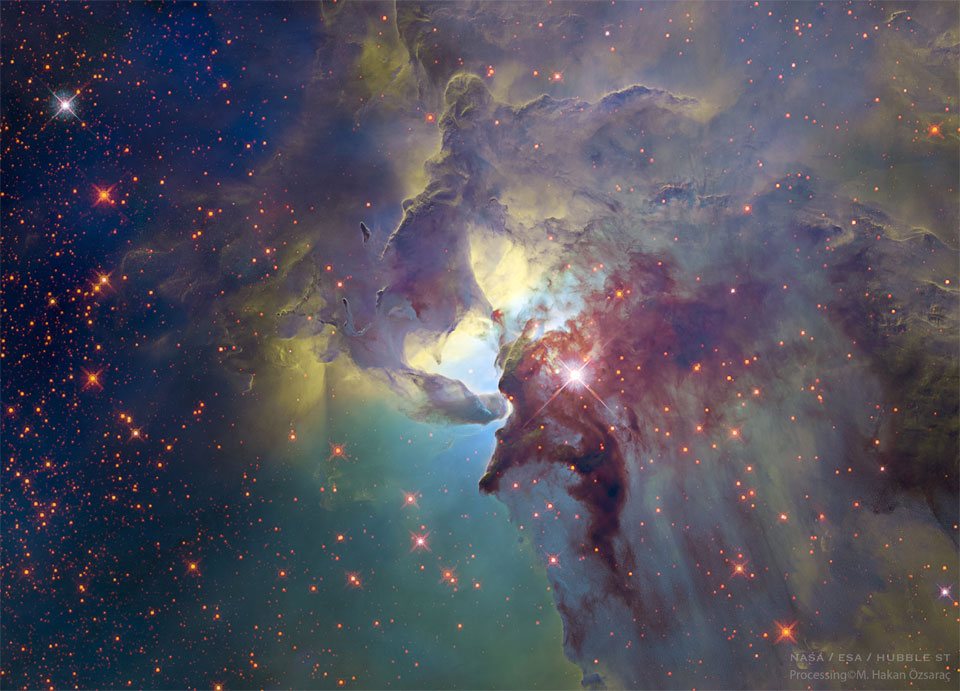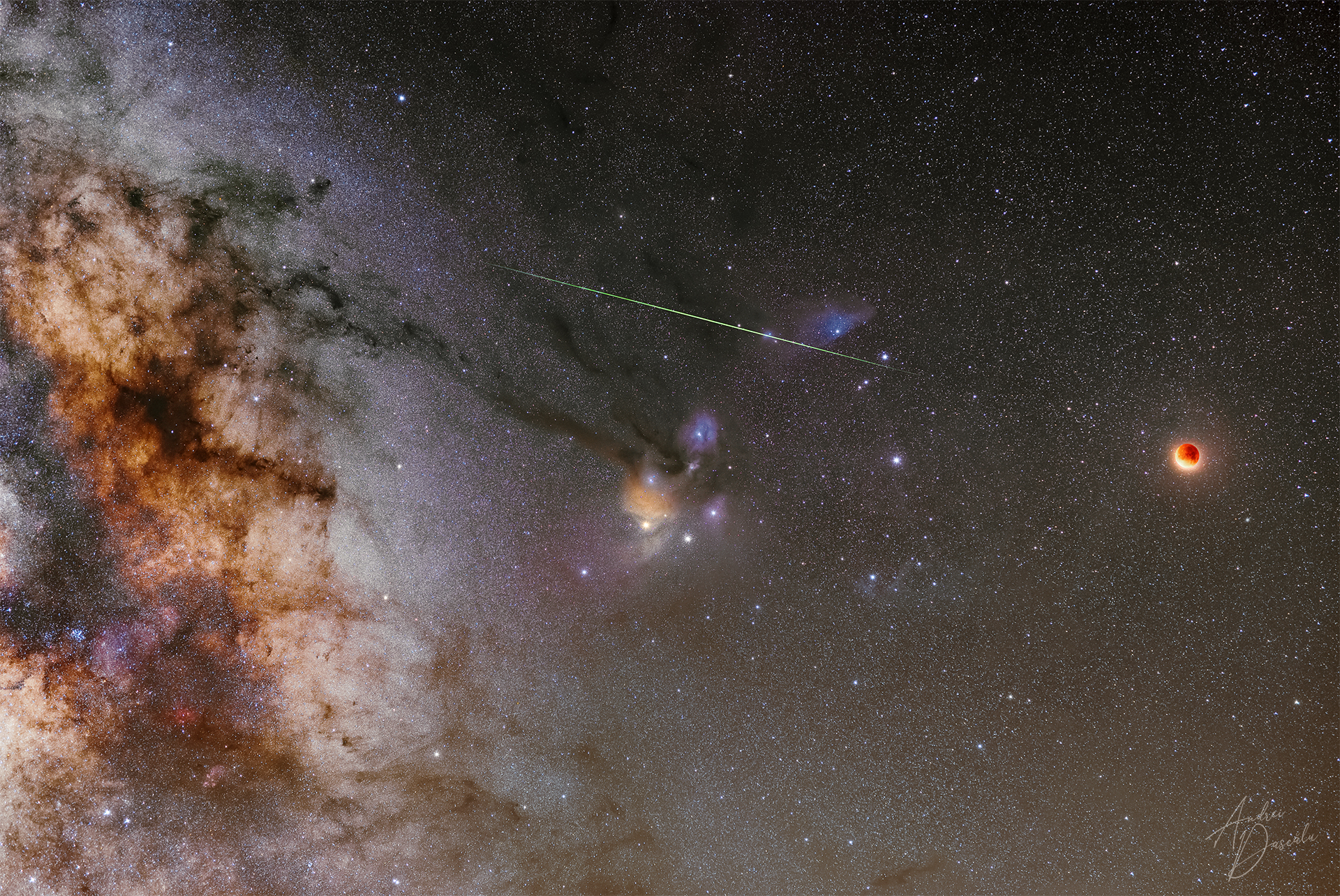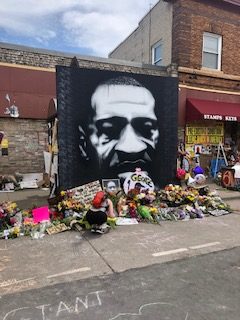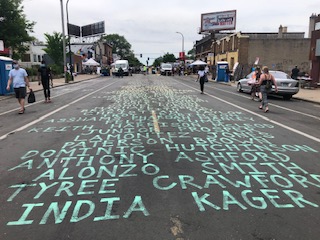Miles Dewey Davis III (May 26, 1926 – September 28, 1991) was an American trumpeter, bandleader, and composer. He is among the most influential and acclaimed figures in the history of jazz and 20th-century music. Davis adopted a variety of musical directions in a five-decade career that kept him at the forefront of many major stylistic developments in jazz.
Born in Alton, Illinois, and raised in East St. Louis, Davis left to study at Juilliard in New York City, before dropping out and making his professional debut as a member of saxophonist Charlie Parker‘s bebopquintet from 1944 to 1948. Shortly after, he recorded the Birth of the Cool sessions for Capitol Records, which were instrumental to the development of cool jazz. In the early 1950s, Davis recorded some of the earliest hard bop music while on Prestige Records but did so haphazardly due to a heroin addiction. After a widely acclaimed comeback performance at the Newport Jazz Festival, he signed a long-term contract with Columbia Records and recorded the album ‘Round About Midnight in 1955. It was his first work with saxophonist John Coltrane and bassist Paul Chambers, key members of the sextet he led into the early 1960s. During this period, he alternated between orchestral jazz collaborations with arranger Gil Evans, such as the Spanish music-influenced Sketches of Spain (1960), and band recordings, such as Milestones (1958) and Kind of Blue (1959). The latter recording remains one of the most popular jazz albums of all time, having sold over five million copies in the U.S.
Davis made several line-up changes while recording Someday My Prince Will Come (1961), his 1961 Blackhawk concerts, and Seven Steps to Heaven (1963), another mainstream success that introduced bassist Ron Carter, pianist Herbie Hancock, and drummer Tony Williams. After adding saxophonist Wayne Shorter to his new quintet in 1964, Davis led them on a series of more abstract recordings often composed by the band members, helping pioneer the post-bop genre with albums such as E.S.P (1965) and Miles Smiles (1967),[5] before transitioning into his electric period. During the 1970s, he experimented with rock, funk, African rhythms, emerging electronic music technology, and an ever-changing line-up of musicians, including keyboardist Joe Zawinul, drummer Al Foster, and guitarist John McLaughlin. This period, beginning with Davis’s 1969 studio album In a Silent Way and concluding with the 1975 concert recording Agharta, was the most controversial in his career, alienating and challenging many in jazz. His million-selling 1970 record Bitches Brew helped spark a resurgence in the genre’s commercial popularity with jazz fusion as the decade progressed.
After a five-year retirement due to poor health, Davis resumed his career in the 1980s, employing younger musicians and pop sounds on albums such as The Man with the Horn (1981) and Tutu (1986). Critics were often unreceptive but the decade garnered Davis his highest level of commercial recognition. He performed sold-out concerts worldwide, while branching out into visual arts, film, and television work, before his death in 1991 from the combined effects of a stroke, pneumonia and respiratory failure. In 2006, Davis was inducted into the Rock and Roll Hall of Fame, which recognized him as “one of the key figures in the history of jazz”. Rolling Stone described him as “the most revered jazz trumpeter of all time, not to mention one of the most important musicians of the 20th century,” while Gerald Early called him inarguably one of the most influential and innovative musicians of that period.
Miles Dewey Davis III was born on May 26, 1926, to an affluent African-American family in Alton, Illinois, 15 miles (24 kilometers) north of St. Louis. He had an older sister, Dorothy Mae (1925-1996), and a younger brother, Vernon (1929-1999). His mother, Cleota Mae Henry of Arkansas, was a music teacher and violinist, and his father, Miles Dewey Davis Jr., also of Arkansas, was a dentist. They owned a 200-acre (81 ha) estate near Pine Bluff, Arkansas with a profitable pig farm. In Pine Bluff, he and his siblings fished, hunted, and rode horses. Davis’s grandparents were the owners of an Arkansas farm where he would spend many summers.
see full post...Rubén González Fontanills (26 May 1919 – 8 December 2003) was a Cuban pianist. Together with Lilí Martínez and Peruchín he is said to have “forged the style of modern Cuban piano playing in the 1940s”.
Between the 1940s and his retirement in the 1980s, he played with Cuba’s most successful acts, including Paulina Álvarez, Arsenio Rodríguez, Orquesta América del 55, Orquesta Riverside and Enrique Jorrín. In the 1990s, he came out of retirement to play in the revival ensembles Afro-Cuban All Stars and Buena Vista Social Club, also recording solo material and performing live until 2002.
González was born in Santa Clara, Cuba, on 26 May 1919. His family moved to the small village of Encrucijada when he was 6 years old. He took up the piano at age seven and graduated from the Cienfuegos Conservatory at age 15.
He grew up wanting to be a doctor and studied medicine, thinking music would remain a hobby he could pursue by night. However, he abandoned his studies after four years because music was “in his blood” and also because of all the encouragement he received from people around him.
see full post...Angela Isadora Duncan (May 26, 1877 or May 27, 1878 – September 14, 1927) was an American dancer who performed to great acclaim throughout Europe and the US. Born and raised in California, she lived and danced in Western Europe, the US and the Soviet Union from the age of 22 until her death at age 50 when her scarf became entangled in the wheel and axle of the car in which she was travelling in Nice, France.
Isadora Duncan was born in San Francisco, the youngest of the four children of Joseph Charles Duncan (1819–1898), a banker, mining engineer and connoisseur of the arts, and Mary Isadora Gray (1849–1922). Her brothers were Augustin Duncan and Raymond Duncan; her sister, Elizabeth Duncan, was also a dancer. Soon after Isadora’s birth, her father was found to have been using funds from two banks he had helped set up to finance his private stock speculations. Although he avoided prison time, Isadora’s mother (angered over his infidelities as well as the financial scandal) divorced him and from then on, the family struggled with poverty. Joseph Duncan, along with his third wife and their daughter, died in 1898 when the British passenger steamer SS Mohegan ran aground off the coast of Cornwall.
see full post...The center of the Lagoon Nebula is a whirlwind of spectacular star formation. Visible near the image center, at least two long funnel-shaped clouds, each roughly half a light-year long, have been formed by extreme stellar winds and intense energetic starlight. A tremendously bright nearby star, Herschel 36, lights the area. Vast walls of dust hide and redden other hot young stars. As energy from these stars pours into the cool dust and gas, large temperature differences in adjoining regions can be created generating shearing winds which may cause the funnels. This picture, spanning about 10 light years, combines images taken in six colors by the orbiting Hubble Space Telescope. The Lagoon Nebula, also known as M8, lies about 5000 light years distant toward the constellation of the Archer (Sagittarius).

Norman Gary Foster (born May 25, 1936) is an American musician who plays saxophone, clarinet, and flute. He is considered a crossover artist, performing jazz, pop, and classical music. He has been prominent in the film, television, and music industries for five decades, having performed on over 500 movie scores and with over 200 orchestras.
He has recorded on numerous Grammy, Academy Award, Emmy, and Golden Globe winning media and soundtracks for artists and composers such as Carol Burnett, Bob Dylan, Barbra Streisand, Mel Torme, Toshiko Akiyoshi, Frank Sinatra, Pat Williams, John Williams, Natalie Cole, Jerry Fielding, Cal Tjader, Marty Paich, and Michael Bublé.
Foster received the Most Valuable Player Award for woodwind doubling from The Recording Academy.
Gary Foster was born in Leavenworth, Kansas, in 1936. He started on the clarinet at age thirteen. His first musical inspiration was Olin Parker, a school music director and teacher who introduced him to the music of Count Basie, Woody Herman, and many other types of music. He listened closely to the Woody Herman Orchestra’s recording of “Four Brothers”, which featured saxophonists Stan Getz, Zoot Sims, and Serge Chaloff. For Foster, Getz stood out on the tenor saxophone because of his tone. Foster also acknowledged the influence of Lester Young and Charlie Parker.
Jazz critic Zan Stewart compared Foster’s style to that of Lee Konitz, Paul Desmond, and Art Pepper (West Coast Jazz style). The music of Lennie Tristano and the concepts taught to him by Warne Marsh have been of great inspiration and influence over the years.
see full post...Marshall Belford Allen (born May 25, 1924) is an American free jazz and avant-garde jazz alto saxophone player. He also performs on flute, oboe, piccolo, and EWI (an electronic valve instrument made by Steiner, Crumar company).
Allen is best known for his work with Sun Ra, having recorded and performed mostly in this context since the late 1950s, and having led Sun Ra’s Arkestra since 1993, after Sun Ra’s Death. Critic Jason Ankeny describes Marshall as “one of the most distinctive and original saxophonists of the postwar era.” Marshall Allen was born in Louisville, Kentucky, United States.
During the Second World War he enlisted in the 92nd Infantry Division and was stationed in France. Allen studied alto saxophone in Paris and played in Europe with Art Simmons and James Moody.
He is best known for his mastery of pyrotechnic effects on the alto – he has said that he “wanted to play on a broader sound basis rather than on chords” (1971 interview with Tam Fiofori)). The opportunity came through his long association with Sun Ra, with whom he performed almost exclusively from 1958 to Ra’s death in 1993, although he did record outside the Arkestra, with Paul Bley‘s group in 1964 and Olatunji‘s group during the mid-1960s. Critic Scott Yanow has described Allen’s playing as “Johnny Hodges from another dimension”.
see full post...Jimmy Hamilton (May 25, 1917 – September 20, 1994) was an American jazz clarinetist and saxophonist, who was a member of the Duke Ellington Orchestra.
Hamilton was born in Dillon, South Carolina, United States, and grew up in Philadelphia. Having learned to play piano and brass instruments, in the 1930s he started playing the latter in local bands before switching to clarinet and saxophone. During this time he studied with clarinet teacher Leon Russianoff. In 1939, he played with Lucky Millinder, Jimmy Mundy, and Bill Doggett, going on to join the Teddy Wilson sextet in 1940. After two years with Wilson, he played with Eddie Heywood and Yank Porter.
In 1943, he replaced Barney Bigard in the Duke Ellington orchestra and stayed with Ellington until 1968. His style was different on his two instruments: on tenor saxophone he had an R&B sound, while on clarinet he was much more precise and technical. He wrote some of his own material in his time with Ellington.
see full post...Bill Robinson, nicknamed Bojangles (born Luther Robinson; May 25, 1878 – November 25, 1949 Richmond, VA), was an American tap dancer, actor, and singer, the best known and the most highly paid African-American entertainer in the United States during the first half of the 20th century. His long career mirrored changes in American entertainment tastes and technology. His career began in the age of minstrel shows and moved to vaudeville, Broadway theatre, the recording industry, Hollywood films, radio, and television.
According to dance critic Marshall Stearns, “Robinson’s contribution to tap dance is exact and specific. He brought it up on its toes, dancing upright and swinging,” adding a “hitherto-unknown lightness and presence. His signature routine was the Stair Dance, in which he would tap up and down a set of stairs in a rhythmically complex sequence of steps, a routine that he unsuccessfully attempted to patent. He is also credited with having popularized the word copacetic through his repeated use of it in vaudeville and radio appearances.
He is best known today for his dancing with Shirley Temple in a series of films during the 1930s, and for starring in the musical Stormy Weather (1943), loosely based on his own life and selected for preservation in the National Film Registry. He used his popularity to challenge and overcome numerous racial barriers. Robinson was one of the first minstrel and vaudeville performers to appear as Black without the use of blackface makeup, as well as one of the earliest Black performers to perform solo, overcoming vaudeville’s two-colored rule. Additionally, he was an early Black headliner in Broadway shows. Robinson was the first Black performer to appear in a Hollywood film in an interracial dance team (with Shirley Temple in The Little Colonel, 1935), and the first Black performer to headline a mixed-race Broadway production.
Robinson came under heavy criticism for his apparent tacit acceptance of racial stereotypes of the era, with some critics calling him an Uncle Tom. He strongly resented this, and his biographers suggested that critics were underestimating the difficulties faced by Black performers engaging with mainstream White culture at the time, and ignoring his many efforts to overcome racial prejudice. In his public life, Robinson led efforts to persuade the Dallas Police Department to hire its first Black policeman; lobby President Franklin Delano Roosevelt during World War II for more equal treatment of Black soldiers; and stage the first integrated public event in Miami, a fundraiser which was attended by both Black and White city residents.
Robinson was a popular figure in both the Black and White entertainment worlds of his era, and is remembered for the support that he gave to fellow performers, including Fred Astaire, Eleanor Powell, Lena Horne, Jesse Owens and the Nicholas Brothers. Sammy Davis Jr. and Ann Miller credited him as a teacher and mentor, Miller saying that he “changed the course of my life.” Gregory Hinesproduced and starred in a biographical movie about Robinson for which he won the NAACP Best Actor Award.
Despite being the highest-paid Black performer of the time, Robinson died penniless in 1949, his funeral paid for by longtime friend Ed Sullivan. In 1989, Congress designated Robinson’s birthday of May 25 as National Tap Dance Day.
see full post...The beautiful background features part of the central band of our Milky Way galaxy on the far left, and the colorful clouds of Rho Ophiuchi in the image center. The unusual guest, a dimmed and reddened Moon on the right, was expected because the image was taken during last week’s total lunar eclipse. The timing had to be right because the Moon — both before and after eclipse — would be so bright it would overwhelm the background. The unexpected guest was the bright meteoracross the image center. The fleeting meteor streak was captured on only one of the 10 consecutively-captured deep-field images from La Palma in the Spanish Canary Islands, while the eclipsed Moon image was taken immediately afterwards with the same camera and from the same location. The next total lunar eclipse — also quite expected — will occur in early November.

see full post...
Charles Earland (May 24, 1941 – December 11, 1999) was an American jazz organist.
Earland was born in Philadelphia and learned to play the saxophone in high school. He played tenor with Jimmy McGriff at the age of 17 and in 1960 formed his first group. He started playing the organ after playing with Pat Martino, and joined Lou Donaldson‘s band from 1968 to 1969.
The group that he led from 1970, including Grover Washington, Jr., was successful, and he eventually started playing soprano saxophone and synthesizer. His hard, simmering grooves earned him the nickname “The Mighty Burner”.
see full post...Robert Dylan (born Robert Allen Zimmerman; May 24, 1941 Duluth, MN) is an American singer-songwriter. Often regarded as one of the greatest songwriters of all time, Dylan has been a major figure in popular culture during a career spanning more than 60 years. Much of his most celebrated work dates from the 1960s, when songs such as “Blowin’ in the Wind” (1963) and “The Times They Are a-Changin’” (1964) became anthems for the civil rights and antiwar movements. His lyrics during this period incorporated a range of political, social, philosophical, and literary influences, defying pop music conventions and appealing to the burgeoning counterculture.
Following his self-titled debut album in 1962, which comprised mainly traditional folk songs, Dylan made his breakthrough as a songwriter with the release of The Freewheelin’ Bob Dylan the following year. The album features “Blowin’ in the Wind” and the thematically complex “A Hard Rain’s a-Gonna Fall“. Many of his songs adapted the tunes and phraseology of older folk songs. He went on to release the politically charged The Times They Are a-Changin’ and the more lyrically abstract and introspective Another Side of Bob Dylan in 1964. In 1965 and 1966, Dylan drew controversy when he adopted electrically amplified rock instrumentation, and in the space of 15 months recorded three of the most important and influential rock albums of the 1960s: Bringing It All Back Home, Highway 61 Revisited (both 1965) and Blonde on Blonde (1966). His six-minute single “Like a Rolling Stone” (1965) expanded commercial and creative boundaries in popular music.
In July 1966, a motorcycle accident led to Dylan’s withdrawal from touring. During this period, he recorded a large body of songs with members of the Band, who had previously backed him on tour. These recordings were released as the collaborative album The Basement Tapes in 1975. In the late 1960s and early 1970s, Dylan explored country music and rural themes in John Wesley Harding (1967), Nashville Skyline (1969), and New Morning(1970). In 1975, he released Blood on the Tracks, which many saw as a return to form. In the late 1970s, he became a born-again Christian and released a series of albums of contemporary gospel music before returning to his more familiar rock-based idiom in the early 1980s. Dylan’s 1997 album Time Out of Mind marked the beginning of a renaissance for his career. He has released five critically acclaimed albums of original material since then, the most recent being Rough and Rowdy Ways (2020). He also recorded a series of three albums in the 2010s comprising versions of traditional American standards, especially songs recorded by Frank Sinatra. Dylan has toured continuously since the late 1980s on what has become known as the Never Ending Tour.
Since 1994, Dylan has published eight books of drawings and paintings, and his work has been exhibited in major art galleries. He has sold more than 125 million records, making him one of the best-selling musicians of all time. He has received numerous awards, including the Presidential Medal of Freedom, ten Grammy Awards, a Golden Globe Award and an Academy Award. Dylan has been inducted into the Rock and Roll Hall of Fame, Nashville Songwriters Hall of Fame and the Songwriters Hall of Fame. The Pulitzer Prize Board in 2008 awarded him a special citation for “his profound impact on popular music and American culture, marked by lyrical compositions of extraordinary poetic power”. In 2016, Dylan was awarded the Nobel Prize in Literature “for having created new poetic expressions within the great American song tradition”.
see full post...Cecil Bustamente Campbell OD (24 May 1938 – 8 September 2016), known professionally as Prince Buster, was a Jamaican singer-songwriter and producer. The records he released in the 1960s influenced and shaped the course of Jamaican contemporary music and created a legacy of work that would be drawn upon later by reggae and ska artists.
Cecil Bustamente Campbell was born in Orange Street in Kingston, Jamaica, on 24 May 1938. His middle name was given to him by his family in honour of the Labour activist and first post-Independence Prime Minister William Alexander Clarke Bustamante. In the early 1940s, Campbell was sent to live with his grandmother in rural Jamaica where his family’s commitment to the Christian faith, gave him his earliest musical experiences in the form of church singing as well as private family prayer and hymn meetings. Returning to live at Orange Street while still a young boy, Campbell attended the Central Branch School and St. Anne’s School.
see full post...Archie Shepp (born May 24, 1937) is an American jazz saxophonist, educator and playwright who since the 1960s has played a central part in the development of avant-garde jazz.
Shepp was born in Fort Lauderdale, Florida, but raised in Philadelphia, Pennsylvania. He studied piano, clarinet and alto saxophone before narrowing his focus to tenor saxophone. He occasionally plays soprano saxophone as well. He studied drama at Goddard College from 1955 to 1959.
He played in a Latin jazz band for a short time before joining the band of avant-garde pianist Cecil Taylor. Shepp’s first recording under his own name, Archie Shepp – Bill Dixon Quartet, was released on Savoy Records in 1962 and featured a composition by Ornette Coleman. Along with alto saxophonist John Tchicai and trumpeter Don Cherry, he formed the New York Contemporary Five. John Coltrane‘s admiration for Shepp led to recordings for Impulse! Records, the first of which was Four for Trane in 1964, an album of mainly Coltrane compositions on which he was joined by Tchicai, trombonist Roswell Rudd, trumpeter Alan Shorter, bassist Reggie Workman and drummer Charles Moffett.
see full post...




 Pics from Memorial Site 2020
Pics from Memorial Site 2020